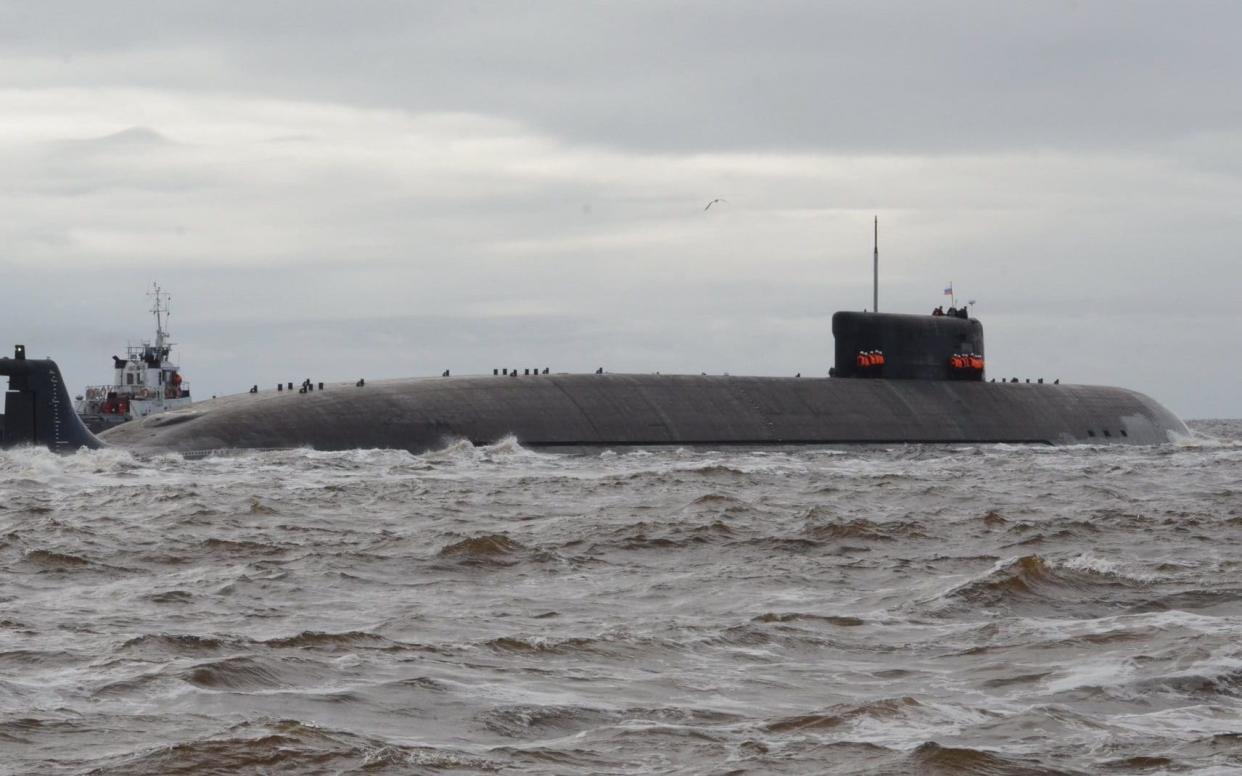In the silent war down in the black abyss, Russia is now stronger than the US Navy

It took years of work, but the Russian navy’s secretive, highly specialised submarine AS-31 – nicknamed “Losharik” – is finally ready for sea trials, currently scheduled for next month.
Losharik’s return to front-line service, five years after the 200-foot submarine suffered an accidental fire that killed 14 of her crew, restores to full strength the Russian navy’s special force for so-called “seabed warfare.” Known as the Main Directorate of Deep-Sea Research, or under its Russian acronym GUGI, it’s the biggest such force in the world.
The US Navy, meanwhile, is barely treading water – handing the Russian fleet a key undersea advantage.
Seabed warfare involves, as its name implies, any military or intelligence activities on the seafloor, potentially miles beneath the ocean surface. It’s one of the most closely-guarded aspects of modern warfare. We can only guess what navies are actually doing down in the pitch-black darkness of the cold seabed: tapping fiber-optic communications cables, perhaps, or maybe removing or sabotaging the enemy’s own taps. Other activities could include the emplacement of highly secret sensor networks, or operations against undersea energy infrastructure.
In any event, only the most sophisticated navies possess the means for conducting seabed warfare. And only one of them makes it a top priority: the Russian navy.
In addition to Losharik, the Russian navy operates three other deep-diving small submarines: Paltus, X-Ray and Kashalot. They all share certain design features: nuclear power, for one, but also extremely strong titanium hulls that can withstand the immense pressures found at 20,000 feet of depth. The Losharik’s pressure hull is believed to be made up of a line of titanium spheres, the shape which best resists pressure. The subs all have claw-like manipulator arms for tampering with objects on the seafloor.
But these subs are on the small side; they aren’t suitable for long voyages. For that purpose, the Russians operate two “mothership” subs – modified nuclear-powered ballistic-missile submarines which can carry the smaller seafloor-warfare vessels across potentially thousands of miles of open ocean while remaining submerged and (the Russians hope) undetected.

Altogether, the Russian seafloor-warfare force is the biggest and most capable on the planet, lending officials in Moscow unparalleled ability to tamper with their adversaries’ intercontinental communications. Only the US Navy has the resources to match, or counter, this capability – but it’s just not a major priority for the struggling Americans right now.
Just one vessel handles all of the American fleet’s seafloor missions: the rarely-seen USS Jimmy Carter. She’s a long vessel by American standards, with a 100-foot extension to her original 350-foot hull. Exactly what’s in the extension is a secret, but whatever it is, it aids the crew in conducting their high-stakes seabed missions.
But there’s a problem. Jimmy Carter launched in 2004, meaning her steel hull – repeatedly stressed by deep dives – might have another 10 years of life left in it.
It’s for that reason that, this year, the US Congress appropriated $5 billion to buy one copy of a new version of the latest Virginia-class nuclear-powered attack submarine with a hull extension for seabed warfare. This vessel should enter service some time in the next five years or so, allowing time for trials before Jimmy Carter becomes unsafe for deep operations.
Even with a brand-new sub, however, the Americans are at a disadvantage deep beneath the waves. The new Virginia will be the equivalent of one of the Russian’s fleet’s two special mothership subs. But after retiring the nuclear-powered research sub NR-1 in 2008, the US fleet no longer operates any smaller seabed-warfare subs in the class of the four smaller subs the Russian fleet operates.
The US Navy is actually two navies: one each operating in the Atlantic and Pacific Oceans, the two only rarely swapping vessels via the Panama Canal or the long trip around South America or the North Pole. Jimmy Carter is a Pacific Fleet vessel. Ideally, the Americans would have a seabed-warfare sub for the Atlantic Fleet, too. Especially considering the growing threat of Russian aggression.
But that would cost billions of dollars, and add to a shipyard backlog that has delayed US naval shipbuilding plans by years. It’s fair to say the Americans are doing their best to maintain a seabed-warfare capability they can afford. But it’s equally fair to say they’re far behind the Russians – and, if anything, falling farther behind as Losharik returns to service.


